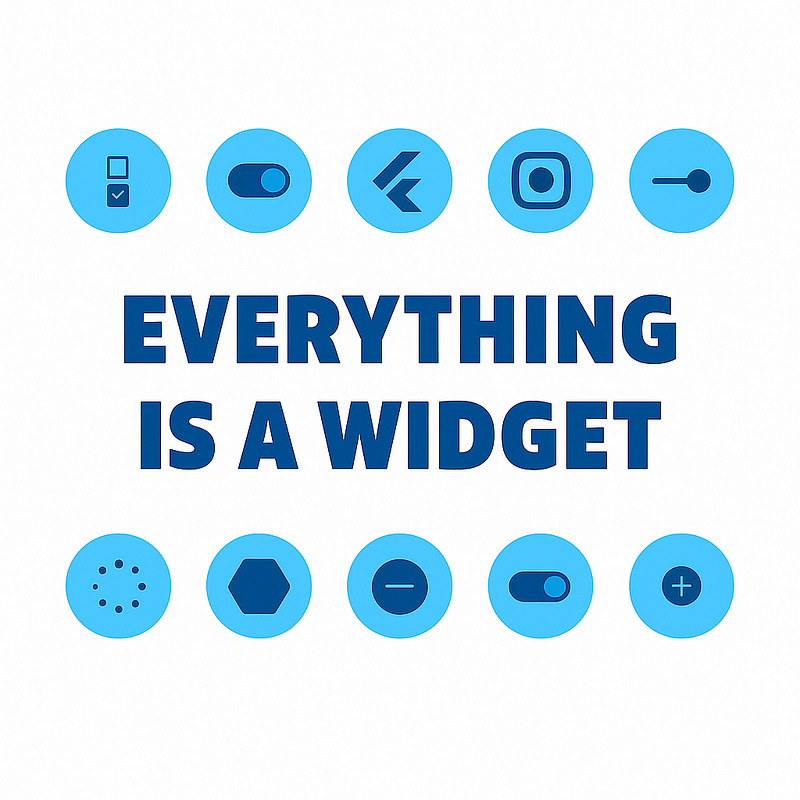Everything Is A Widgets Details
“Everything is a Widget!” — Flutter’s Slogan, Explained Beyond the Surface
You’ve heard it everywhere: “Everything is a widget in Flutter.” It sounds simple, powerful, and even a little magical. But what does it actually mean? And why does understanding it matter for building high-performance apps?
The Illusion of Simplicity
Flutter gives you declarative UI in a way that feels effortless. Nest a few widgets, add some data, and your UI comes alive. But as apps scale with more animations, data, and users, developers quickly face issues like frame drops and janky transitions. To solve them, you need to understand what’s really happening behind the scenes.
So, What Is a Widget?
Every UI element in Flutter extends from the Widget class —
which is immutable.
That means when your UI updates, Flutter doesn’t change widgets —
it recreates them.
For example, when you call setState() or an animation ticks,
Flutter rebuilds parts of the tree by creating new widget instances.
But thanks to its architecture, it only updates what’s necessary.
The Build() Method & Performance
The build() method is called whenever Flutter needs to
repaint a widget. This happens because of:
- State changes (
setState, Provider, BLoC, etc.) - Animations and user interactions
On modern devices, the screen refreshes at 60–120 FPS. That gives you just 16ms per frame (at 60 FPS). If your widgets don’t rebuild in time? You drop frames — leading to jank.
Flutter’s Widget, Element, and Render Trees
When you rebuild, Flutter compares the new widget tree to the previous one. Thanks to immutability, it can quickly decide:
- Which parts are new
- Which parts are unchanged
- Where to reuse elements
The Element Tree manages widget lifecycles, while the Render Tree handles layout & painting. This separation makes widgets lightweight — and that’s why we say widgets are cheap.
Why This Matters
Understanding widgets helps you write performant Flutter apps. With this knowledge, you can:
- Break large UIs into smaller widgets
- Use
constconstructors whenever possible - Optimize rendering with
RepaintBoundary - Use builders (
ListView.builder) for efficiency
Conclusion
So, is everything a widget? ✅ On the surface, yes — every UI element you write is a widget. 🔍 Underneath, widgets are just descriptions of UI — blueprints that Flutter uses to manage its Element and Render trees.
Understanding Flutter’s widget system helps you go beyond “just coding UIs” into writing efficient, scalable, and high-performance applications.
Article Information
- Category Flutter / Architecture
- Author Mohamed Yaser
- Published May 18, 2025
- Read on Medium
